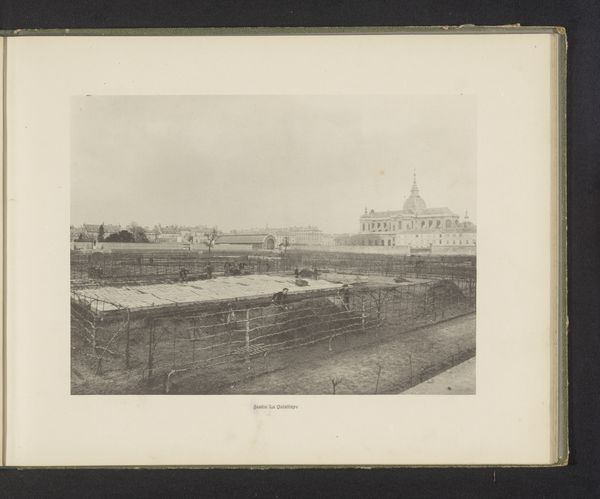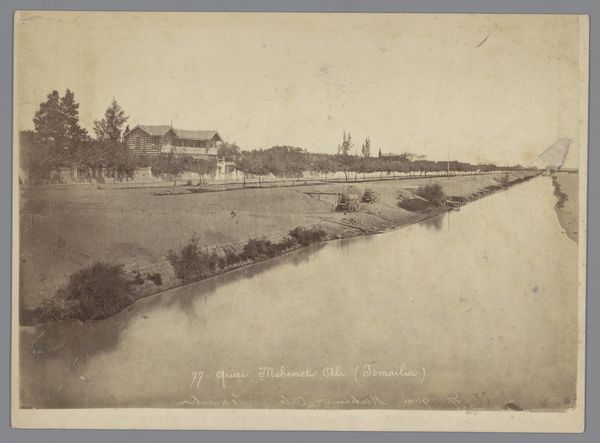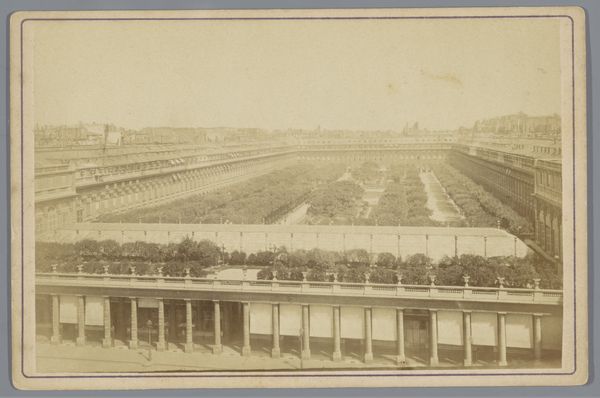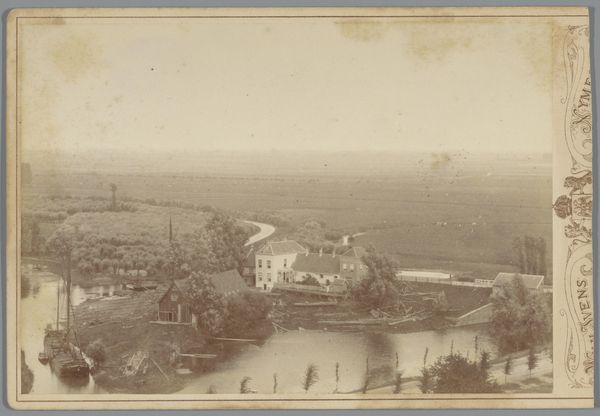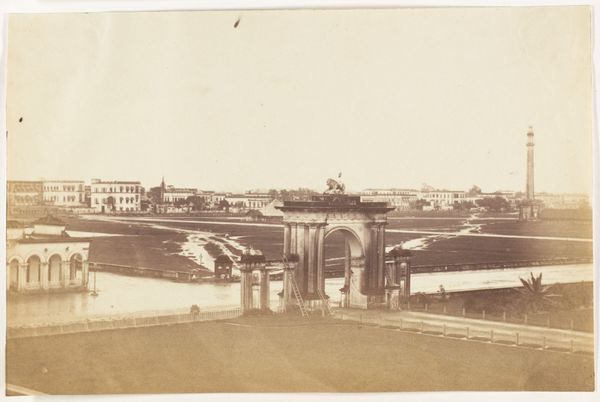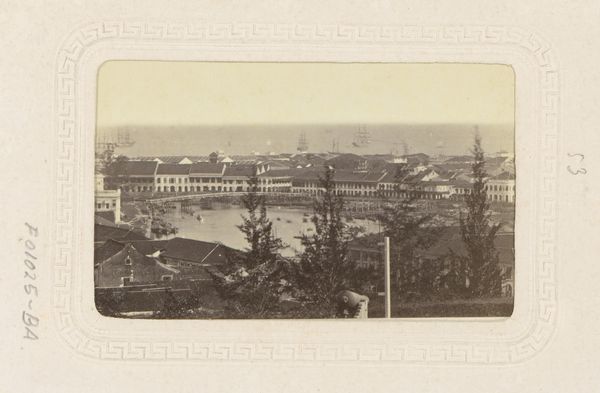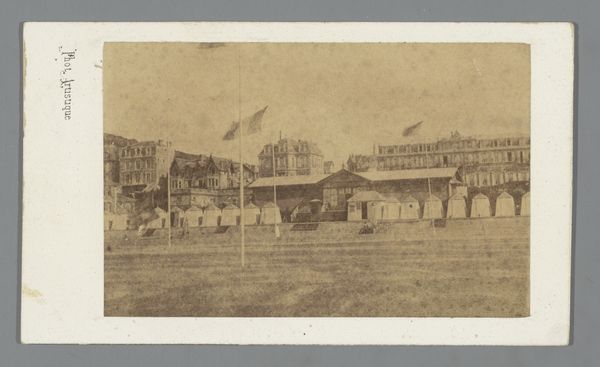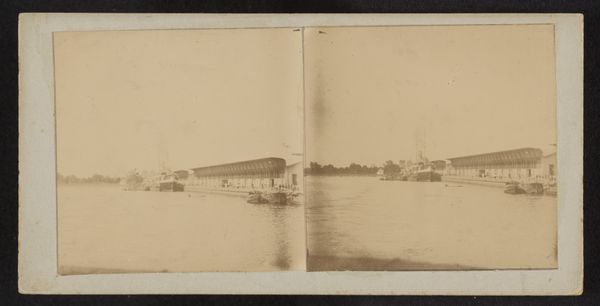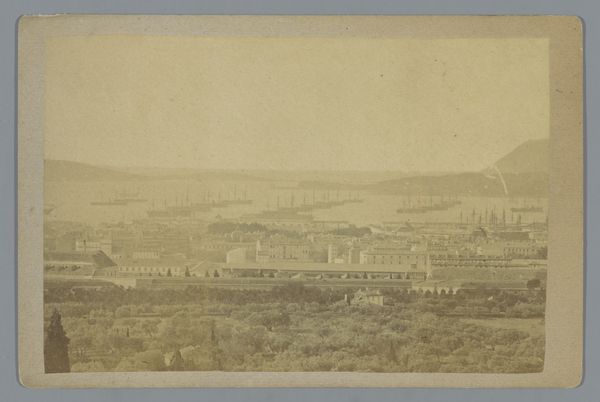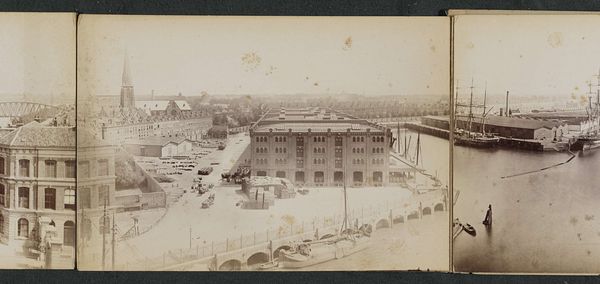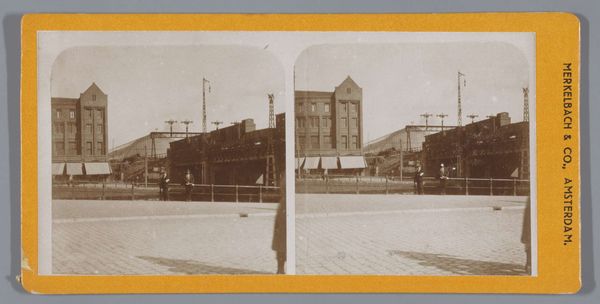
photography, albumen-print
#
impressionism
#
landscape
#
river
#
photography
#
cityscape
#
albumen-print
#
realism
Dimensions: height 106 mm, width 164 mm
Copyright: Rijks Museum: Open Domain
Curator: The sepia tones give this albumen print, entitled "Gezicht op Metz," dating from between 1870 and 1900, a wonderfully somber feel. It offers a cityscape seen from afar, emphasizing the buildings but including the adjacent countryside. What is your immediate reaction to it? Editor: It feels…quietly industrial. There’s something about the almost monotonous repetition of form in the lower half, with what look like regimented rows of small buildings or workshops, that speaks of production and labor. The tones make it very atmospheric. Curator: The photographic technique certainly adds to that feeling. This was captured by F. Baudinet during a fascinating period. Photography had become more accessible, impacting artistic practices. Here we can note how photography offered an alternative to history paintings or travel chronicles. How to capture a moment, a specific angle? The rise of photography created a demand for precise perspectives. Editor: And you can see that social element, can't you? Metz was annexed by Germany after the Franco-Prussian War in 1871. So this image isn't just an objective cityscape, it is charged with a particular political tension, it serves perhaps as a statement. Baudinet is also trying to freeze in time the familiar sight of this landscape threatened by industrialization. It's interesting how a photographic medium contributes to its contextual reading. Curator: Absolutely, and consider the albumen process. It was relatively inexpensive, producing a sharp, detailed image. The tones in this particular print speak to me of industry, of work, of production—of the way people are making. Editor: The soft focus is interesting. While documentary photography usually emphasizes precision, we also see a certain amount of artistic license taken by photographers such as Baudinet. I also wonder about Baudinet’s intent in terms of his viewership: how and for whom would this image have been circulated? Was the intention topographical record-keeping, or something else? Curator: These are precisely the types of considerations that enrich our understanding of such images. We see the physical components – the albumen print, the camera obscura, the photographic process, and can investigate this image as an historical document. Editor: Indeed, by looking at the photographic medium, its social and artistic conditions of production and viewership, one can contextualize it for a modern-day museum audience. The power and beauty reside precisely in what a historical artwork teaches us about the evolution of society.
Comments
No comments
Be the first to comment and join the conversation on the ultimate creative platform.

